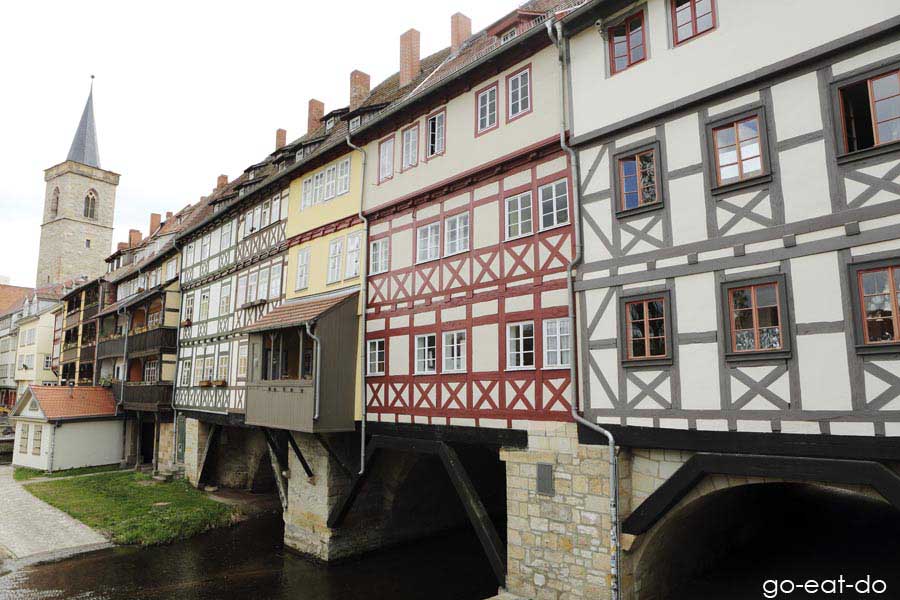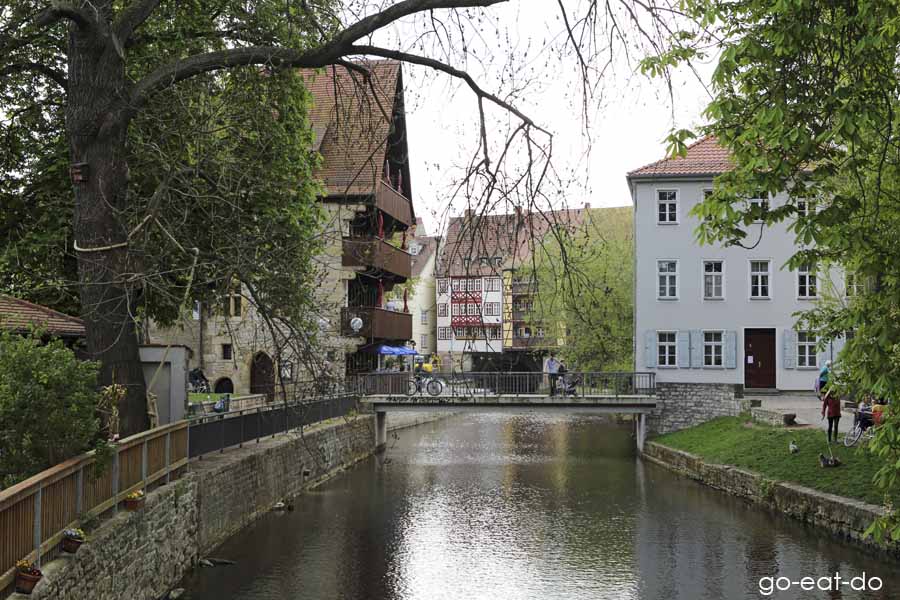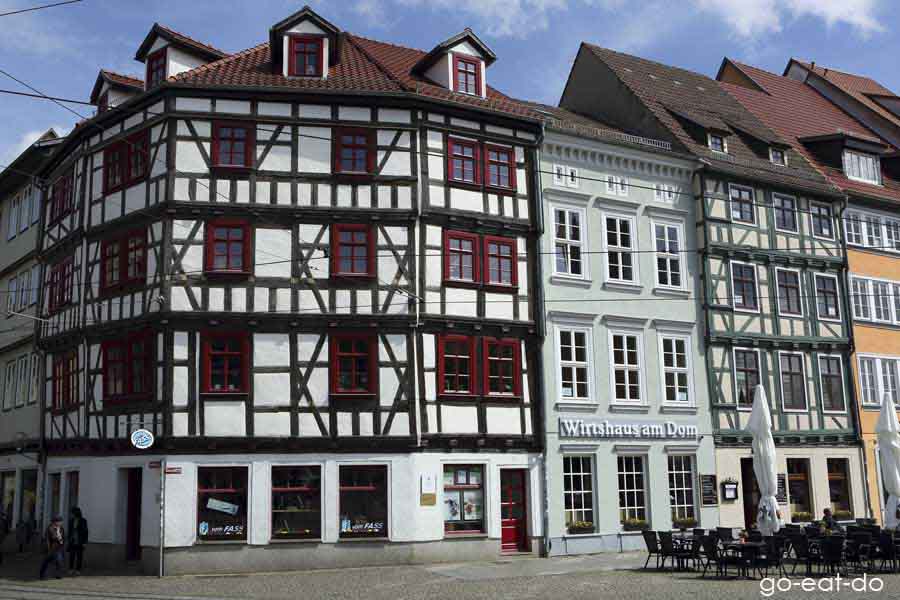This With a Local supplies insider tips on things to do and see while visiting the city of Erfurt, Germany.
For more than 20 years Johanna von Hassell has lived in the city of Erfurt, in Thuringia, Germany.
I chatted with Johanna on Erfurt’s Domplatz (Cathedral Square) while munching on a mustard-smothered bratwurst, a traditional Thuringian type of sausage whose heritage can be traced to the early 1400s. Locals say you should always buy them from stalls where they are grilled over charcoal.
In front of us stood half-timbered houses that were built for merchants but now house cafes and restaurants. Behind us was the city’s cathedral and the three spires of the Church of St Severus.
Johanna answered questions, providing an introduction to Erfurt from the perspective of a local:
Why do you think people should visit Erfurt?
It’s genuinely one of the largest and best-preserved historic city centres in all of Germany. It’s also surrounded by nature.
What makes Erfurt so attractive is the fact the climate here in summer is so pleasant. It doesn’t rain very often. It’s never too hot. When it’s warm, it’s a dry heat.
There’s a Mediterranean-style lifestyle—lots of cafes with streetside seating. Many of the students like to stay here over the summer and the city’s population is getting ever younger.

What is your favourite place in the Erfurt?
It’s probably the Wenigermarkt [a marketplace], behind the Krämerbrücke [a bridge lined by half-timbered medieval houses]. There isn’t much traffic and it’s a quiet place with lots of cafes with terrace seating.
Also, to the north side of the Krämerbrücke there’s an area of greenery where people can sit themselves down next to the water. It’s tranquil and feels like it’s a little village. Sometimes ducks are in the water. It’s picturesque, quiet and in the middle of the city.

Where do you like to dine in Erfurt?
Restaurant Kromers (Kleine Arche 4; tel. +49 0361 64477211), directly next to the Hochzeitshaus [the Haus zum Sunneborn, dating from 1536, where weddings are now held], because it’s a beautiful building and a cosy pub-restaurant. It has a little courtyard where people can sit outside.
It serves Thuringian cuisine—not too heavy, not overly original—Thuringian cuisine that’s made light. I’m not a fan of heavy food. I associate that with winter. There’s a bit of meat, some potato, but it’s lightly made.
Which bar do you recommend people visit in Erfurt?
I like the Metroplitan Bar (Pergamentergasse 33a tel. +49 361 64479720). They’ve got lovely cocktails and live music, and it’s not all that big. I like going there.
What is your favourite legend or quirky bit of history associated with Erfurt?
The city is called Erfurt. ‘Furt’ means a shallow place on a river—a ford. The river that flows through Erfurt is the Gera. Obviously, that doesn’t fit together.
Erfurt got its name because where the ford is the river is ‘erf’ an old German word for dirty brown water.
There’s a legend about the ford near the Krämerbrücke that makes many people laugh.
There’s a house there with beautiful red half-timbering. Long ago, a baker is said to have lived there and married a beautiful woman. After the wedding, when he was out of flour for the first time he barred the windows so that his beautiful wife couldn’t go out. He’d hardly left the building when she hung a sign out saying ‘Er ist fort’ — meaning ‘he’s way’ —and, therefore, we are called Erfurt.

If guests can stay in the area for an extra day, what do you recommend they do and see?
Staying in Erfurt means people who are interested in seeing German culture, from the Middle Ages through to the 18th century, only need a few minutes to travel to Weimar, Gotha or Arnstadt. We’re in the middle of beautiful landscapes that’s surrounded by numerous pearls.
When it’s summer I’d recommend people go to the EGA, a park built for the Erfurt Garden Exhibition—a large area laid out during the 1960s. It has beautiful flower beds and benches. There’s a café and lots of flair from the 1960s.
In winter I’d recommend a visit to Gotha, the city that’s 25 kilometres from here. They had art-loving princes and the biggest Renaissance palace in Germany stands there. There’s an art collection with artefacts from the Middles Ages until the 19th century, ranging from paintings, to sculptures to little gifts and models, including Roman buildings, sculpted from cork.
Further information
See the Erfurt and Thuringia plus the Cultural Heart of Germany and Germany tourism information websites for more information.
Photos illustrating this post are by Why Eye Photography.
If you enjoyed this post why not sign up for the free Go Eat Do newsletter? It’s a hassle-free way of getting links to posts on a monthly basis.
‘Like’ the Go Eat Do Facebook page to see more photos and content.




